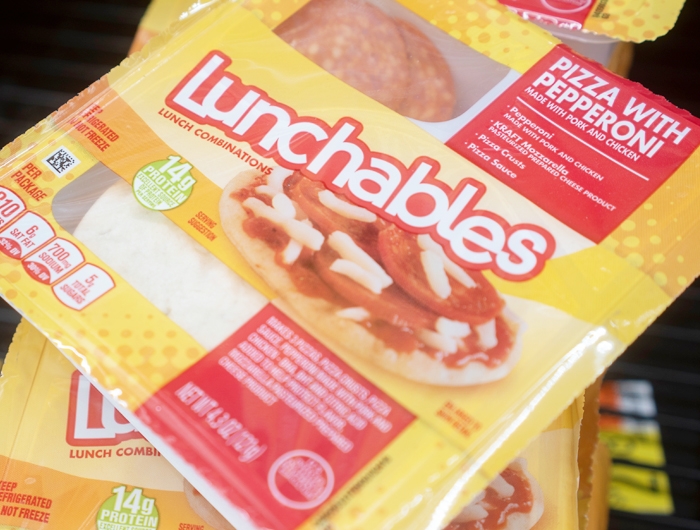The unintended consequences of offering Lunchables at school

Tada Images - stock.adobe.com.
A highly questionable move for school nutrition
Lunchables: the coveted yellow box that sparked envy in cafeterias across America in the 1990s to early 2000s, nostalgic for many millennials alike. Once, a conveniently packaged meal that saved time for busy parents who could afford it and who were able to look past, or were blissfully unaware of, their lack of nutritional quality, Lunchables will now be coming to school meal programs starting this fall. Here are three reasons CSPI is not thrilled about Lunchables in school meals:
1. They undermine school nutrition programs and confuse families.
Are Lunchables healthy? While the details are sparse on the nutritional quality of Lunchables made for schools, in order to meet National School Lunch Program (NSLP) guidelines they likely are nutritionally different than their seemingly identical counterparts available in the supermarket. These “copycat” products are widespread in the K-12 marketplace, and they undermine school nutrition programs and confuse families.
For example, when parents hear that Lunchables meet current school nutrition standards it’s not unreasonable for them to conclude these products are now “healthy.” Then, the next time they see the product in the grocery store, they might feel more comfortable buying it. Not only are the “made for NLSP” Lunchables products likely nutritionally different than the retail sold Lunchables products, but kids might prefer the grocery store versions – which are usually saltier, more sugary, or have fewer whole grains. When kids get their school meals, they may ask, “why doesn't this taste like it does at home?” which could result in school nutrition getting a bad rep for providing a meal that doesn’t taste as good as other options. Everyone loses (except Kraft Heinz, which sold $1.36 billion worth of Lunchables in 2018). If companies can make products healthier for schools, they should update their formulation for retail to be healthier, too.
2. They could replace hot meals, which are a lifeline for millions of kids.
30 million kids participate in school meals programs, many of which are from families with low incomes. A hot school lunch is a lifeline for many children who might otherwise not have access to nutritious foods. If Lunchables become part of a regular menu rotation, what meal will they replace? Will there still be a choice for a hot meal? And if there is a choice, will kids be as powerless against the lure of the yellow box and Kraft Heinz’s marketing to kids as their parents were before them?
3. They increase kids’ exposure to cancer-causing ingredients.
The retail version of one of the Lunchables coming to schools, the Turkey and Cheddar Cracker Stackers, consists of processed turkey, Kraft Cheddar Pasteurized Prepared Cheese Product, and Crackers. The International Agency for Research on Cancer, part of the World Health Organization, classifies consumption of processed meat as a Group 1 carcinogen (“The agent is carcinogenic to humans” – in other words, it is known to cause cancer). Further, sodium nitrite, present in the Turkey and Cheddar Cracker Stacker Lunchable, is used as a curing agent for meat and itself is classified as a Group 2A carcinogen (“Probably carcinogenic to humans”). Some jurisdictions have banned processed meats in school meals, but federal regulations are currently silent on the issue.
While there might be a lot of hype for Lunchables back in school cafeterias, the unintended consequences of offering it make it a highly questionable move for school nutrition. Parents and concerned individuals should know that the U.S. Department of Agriculture is currently requesting comments on newly proposed school meal nutrition standards. While the proposed rules don’t target Lunchables specifically, they do include new limits on sodium and added sugars and require most grains be made with at least 50 percent whole grains. To take action, please submit a public comment to USDA by April 10 here.




